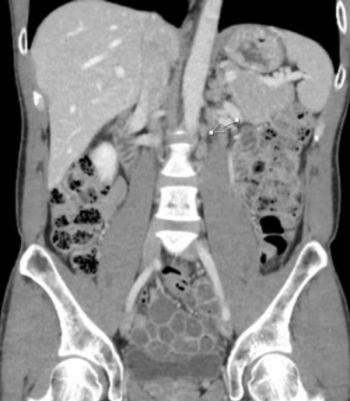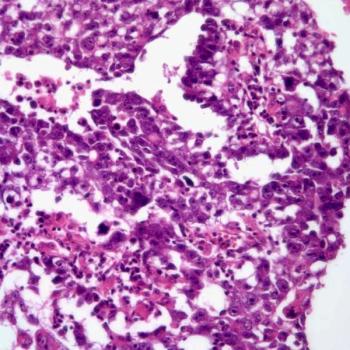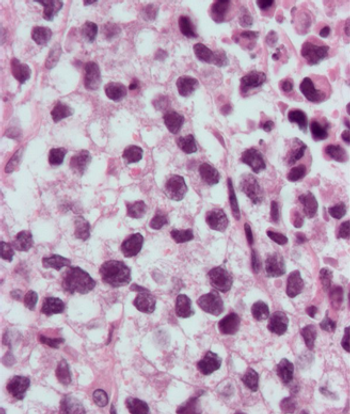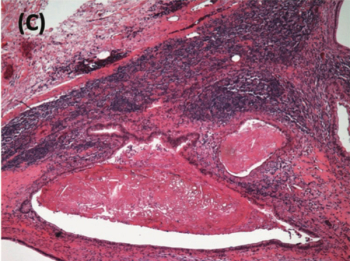
Oncology NEWS International
- Oncology NEWS International Vol 17 No 7
- Volume 17
- Issue 7
More Support for Adjuvant Carboplatin for Stage I Seminoma
CHICAGO-A single 2-hour infusion of carboplatin appears to be an alternative to a course of radiation therapy for preventing relapse in patients with stage I seminoma after orchiectomy, according to mature results of an international trial reported at ASCO 2008 (plenary, abstract 1).
CHICAGO-A single 2-hour infusion of carboplatin appears to be an alternative to a course of radiation therapy for preventing relapse in patients with stage I seminoma after orchiectomy, according to mature results of an international trial reported at ASCO 2008 (plenary, abstract 1).
R. Timothy Oliver, MD, of St. Bartholomew’s and the Royal London Hospital, presented updated results of the MRC TE19/EORTC 30982 trial, the largest trial in testicular cancer to date.
The noninferiority trial randomized patients with stage I seminoma who had undergone orchiectomy to carboplatin (AUC 7) or radiation therapy (with a subrandomization to 20 or 30 Gy). Initial results, obtained after a median follow-up of 4 years, have been previously reported (Lancet 366:293-300, 2005).
“It is extraordinary that with so little treatment, we are able to reduce by 75% to 80% the expected relapse rate.”
- Dr. R. Timothy Oliver
Analyses were based on 573 men in the carboplatin group and 904 in the radiation group. With an updated median follow-up of 6.5 years, the 5-year rate of relapse, the trial’s primary endpoint, did not differ significantly between the carboplatin arm and the radiation therapy arm (5.3% vs 4.0%), Dr. Oliver said at an ASCO press briefing.
n fact, he noted, the relapse rate in the carboplatin arm was reduced to 4% when analyses were restricted to patients who received the full dose of chemotherapy.
An Unexpected Finding
An unexpected finding, according to Dr. Oliver, was a significantly lower rate of germ cell tumors in the contralateral testis with carboplatin (0.3% vs 1.7%, HR 0.22, P = .03), raising the possibility of a more conservative approach at the time of surgery.
“Clearly, until this time, no one had really given any thought to whether or not we should try to do lumpectomies and testis conservation for men with testis cancer,” he commented.
The carboplatin and radiation groups had similarly low rates of death from seminoma (0% and 0.1%). In addition, carboplatin had an acceptable safety profile and a lower rate of acute toxicity.
“We have fairly solidly confirmed our primary endpoint, which is that carboplatin is an alternative, an equivalent management strategy for these patients,” Dr. Oliver concluded. “It is extraordinary that with so little treatment, we are able to reduce by 75% to 80% the expected relapse rate of such patients.”
He acknowledged that unequivocal evidence of the comparable safety and efficacy of these adjuvant therapies will require follow-up of at least 20 years.
A Reasonable Third Option
“From the results of this study, it seems like carboplatin is a possible reasonable third option [to radiation therapy and surveillance],” said discussant George J. Bosl, MD, of Memorial Sloan-Kettering Cancer Center. “I would not say, however, that it is the standard of care.”
Given the confidence intervals for relapse-free survival, the trial has technically not met its noninferiority endpoint, he noted. Moreover, noninferiority is not the same as equivalence, and “certainly, equivalence has not been demonstrated.”
Ideally, management of clinical stage I seminoma would be risk-based, Dr. Bosl continued, and to that end, identification and prospective validation of more prognostic factors are priorities for future research.
In the meantime, patients should be counseled so that they can make informed decisions. “We explain to the patient that each choice has known and unknown risks,” he concluded. “To achieve the best outcome, the patient needs to understand his options and risk profile.”
Articles in this issue
over 17 years ago
National Cancer Survivors Dayover 17 years ago
New Indication for Velcade in Previously Untreated Myelomaover 17 years ago
Risk Factors for Mantle Cell Lymphoma Identifiedover 17 years ago
RAS Mutations Enhance Chemotherapy in AMLover 17 years ago
Antidiabetic Agent Metformin May Boost pCRs in Breast Caover 17 years ago
Eisai Seeks Full FDA Approval for Ontak for CTCLover 17 years ago
Symptom Screen Plus CA125 Detects Early Ovarian Caover 17 years ago
Cisplatin Linked to Cardiac Complications in Testicular Ca Patientsover 17 years ago
Updated X-ACT Study Results Presentedover 17 years ago
ThromboGenics and BioInvent Announce Alliance with RocheNewsletter
Stay up to date on recent advances in the multidisciplinary approach to cancer.

















































































